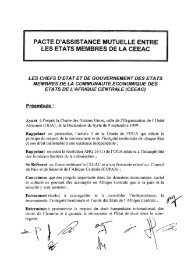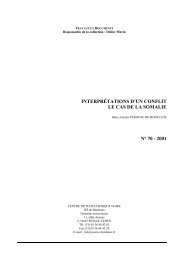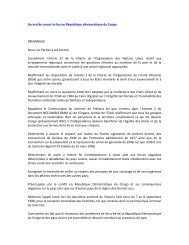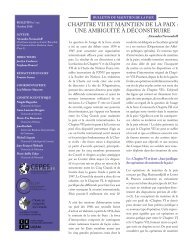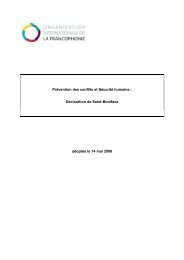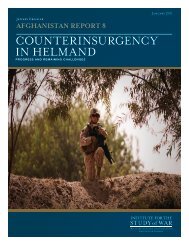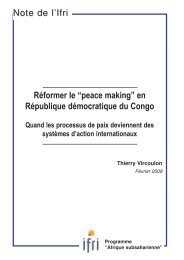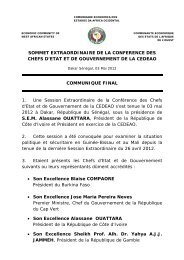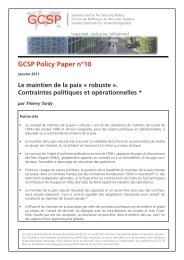engaging fragile states - Woodrow Wilson International Center for ...
engaging fragile states - Woodrow Wilson International Center for ...
engaging fragile states - Woodrow Wilson International Center for ...
Create successful ePaper yourself
Turn your PDF publications into a flip-book with our unique Google optimized e-Paper software.
In 2009-2010, Pakistan, Yemen, and Haiti each illustrated how <strong>fragile</strong>, but not<br />
failed, <strong>states</strong> can suddenly become headline news and require major US attention.<br />
Un<strong>for</strong>tunately at this time, the US government (USG) is not in an ideal position<br />
to address the threats from failed and <strong>fragile</strong> <strong>states</strong> beyond its deep involvement<br />
in Iraq and Afghanistan. Burdened by fighting two wars, in addition to<br />
recovering from an economic recession that has led to incurring huge costs and<br />
budget deficits from domestic programs piling up the national debt, the US is unlikely<br />
to be able to take on further major international commitments. The <strong>for</strong>eign<br />
policy agenda is already crowded with geopolitical issues—the Israeli-Palestinian<br />
conflict, Iran, North Korea, and US-China relations—and there<strong>for</strong>e faces the dilemma,<br />
on the one hand, of increasing the risk of new threats from various failing<br />
<strong>states</strong>, while on the other, increasing the strain on its stretched capabilities by<br />
expending more to address those threats.<br />
Facing these concerns and yet strapped <strong>for</strong> resources to deal with them, can the<br />
US still take meaningful steps to mitigate the threats arising in the most unstable<br />
areas of the world? Are US policies able to obtain better results within its current<br />
capabilities rather than embarking on ambitious new programs abroad? What<br />
would such a US strategy toward <strong>fragile</strong> and failed <strong>states</strong> look like? This report<br />
examines realistic and practical options <strong>for</strong> the US in reducing state fragility and<br />
failure, while staying largely within existing resource constraints.<br />
4 | Engaging Fragile States:An <strong>International</strong> Policy Primer



